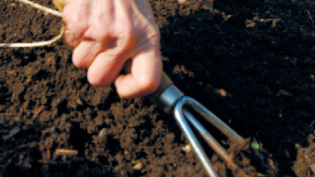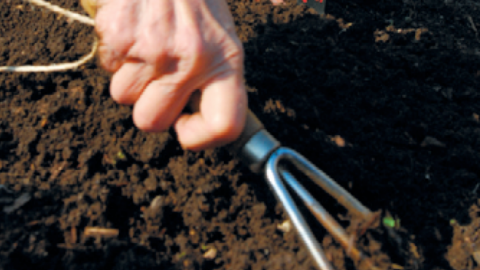Jump Into Gardening
The big secret in my life is that although I have been a gardener here in the Southwest since 1975 – starting at the ripe old age of 14 – I am still discovering how to grow plants in the desert. Being a lifelong Phoenix gardener, it is often assumed that I have it all figured out in the vegetable-growing department. So much so that when people tell me they have two brown thumbs I just laugh, then promise them that I have killed more plants, including trees, than they will ever come close to destroying.
In reality, gardening in the desert is simple . . . to a point. There's one overall rule and two very important instructions that, when followed, make growing a lot easier.
The rule: Desert gardening is one great big grand experiment. You win some and you lose some. Don't take it personally or get discouraged.
The directions: Give your plants 1. healthy soil and 2. enough water to keep them thriving. Yes indeed, it is that simple.
Building soil is the single most important step you can take toward growing a successful garden. Our desert soils are devoid of four out of the five components needed for healthy soil. Dirt (broken-down rock and clay) is the component we have in abundance. Building the other four components into the soil (air space, water, organic material and the all important little "tillers," including bugs, microorganisms, worms, etc.) is paramount. What this means is that you need to add lots and lots of organic material. I have found that it typically takes three to five years of consistently adding compost to my garden beds to achieve really good soil.
However, I want to keep it easy for you, so the lazy gardener in me highly recommends that you just add mulch to the top of your garden each year and let the plants do the "digging." The simplest way to do this is to buy a bag or truckload of mulch, spread it and put your plants into it – no other work required.
Then keep your new gardens watered every two or three days. One of the biggest downfalls of beginning gardens is forgetting to regularly water the plants.
If you want to make your big grand gardening experiment a bit more complicated, there are a few additional guidelines that will assist you in your quest for perfect parsnips or tantalizing tomatoes.
Eastern and southern exposures (that means your garden gets morning and midday sunshine) are the best places to nurture your garden. Northern and western exposures are the hardest places; the western exposure gets way too much sun and the northern gets close to none. I usually tell people to put their chicken coop on the north side and plant grapes and trees on the west side to create shade. (See the Fall 2010 issue of Edible Phoenix for my article on edible shade.)
Beyond the exposure considerations, it simply is best if you begin to experiment in your own space to see what works well and what doesn't. Don't get discouraged. Remember that some of the most productive gardeners out there have killed a lot of plants during the process of discovering how and where to best grow their "groceries." This part of the process involves a lot of observation. Look carefully at such things as
• What parts of the yard get the hottest and the coldest?
• Where does the rain fall and puddle?
• What plants grow best in what space?
By observing as much as you can you will significantly improve your chances of success.
A question I am always asked is, "What about the weeds?" There are two noxious weeds that we just can't live with and if you leave them in the vicinity of your garden they will take over. They are Bermuda grass and nut grass. I'm sorry to say that the only thing you can do to get rid of them is to dig them out – persistently.
Recently some enthusiastic gardeners showed me their beautiful raised-bed garden that they were very proud of. Unfortunately it was planted right in the middle of their lawn. Before they knew it (in about three months) the Bermuda had completely choked out their highly anticipated vegetables. Don't make the same mistake. Plant your veggies in planters, boxes, pots and gardens that are free from Bermuda and nut grass.
There are many more friendly and often edible weeds that automatically will plant themselves in our gardens that are OK. Mallow, purslane and sour grass are three that I regularly eat. There also are many others that I let grow in my yard for the 'living mulch' effect – they help keep the soil moist and when they mature they make great food for the chickens.
My most productive gardening tip is to just do something. There is so much that can be grown in the Desert Southwest – jump in and experiment, see what works and what you love. The more you do that, the more you will find that the secret to a happier life is in your garden.







